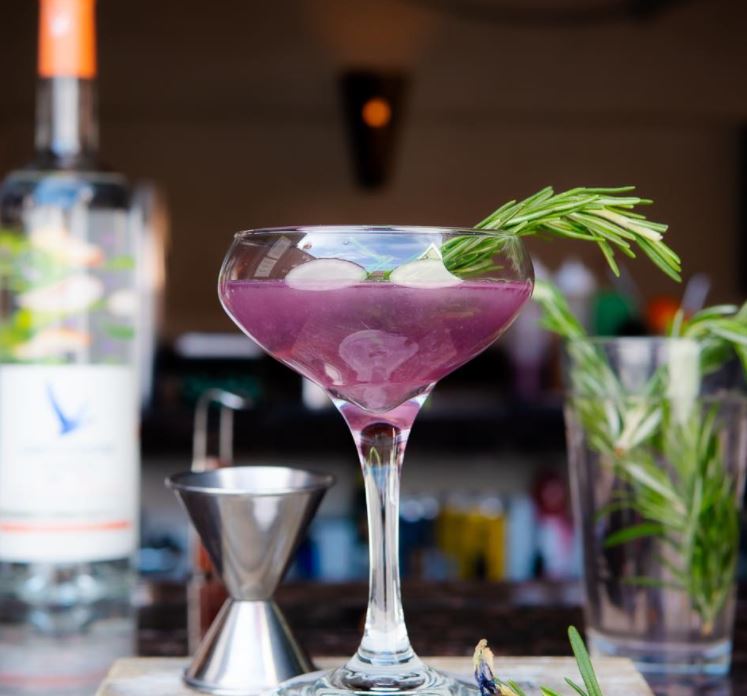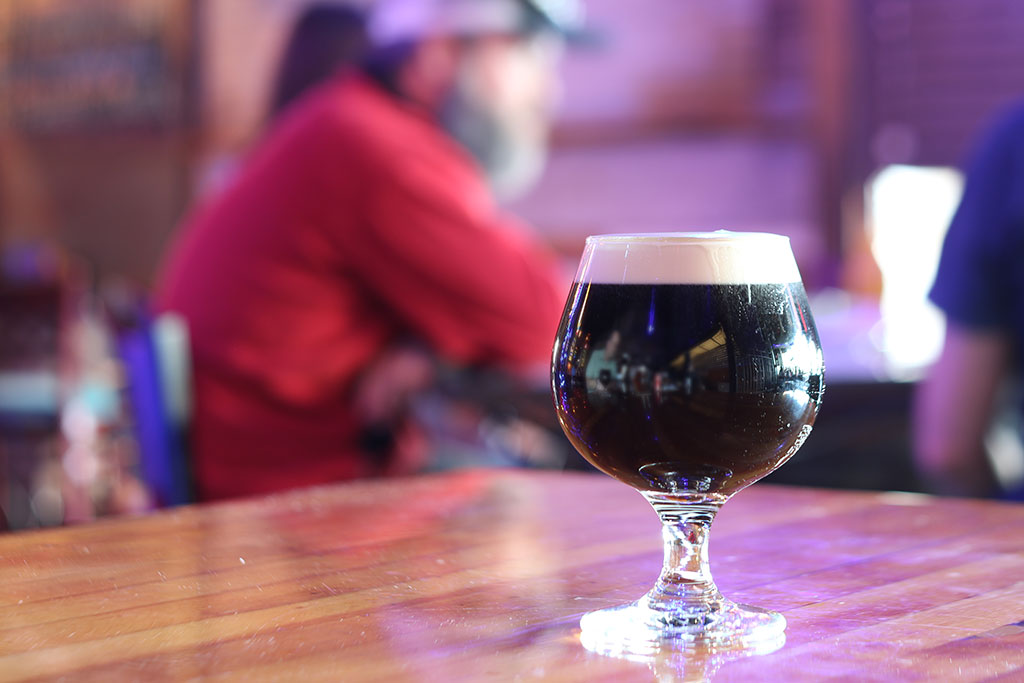
Did you feel that huge gust of wind Sunday evening, echoing through Tucson, Phoenix, and all the way up to Flagstaff?
Yeah, that was every single beer rep in the state collectively sighing with relief that Arizona Beer Week is over.
Holy cow those girls and guys looked spent! Most were hosting multiple events a night while still selling and repping their product during the day – for nearly every single day of the 10 day stretch.
This year’s event saw more local breweries, more local craft beer bars, and many new craft beer drinkers.
I was a beer newb about a decade ago. I feared dark beer, drank from a can, thought IPAs tasted similar to whatever the Devil’s toilet water tasted like – you get the point.
Over the years, I’ve learned to appreciate different beer styles and all the stuff beer nerds take for granted. Sure, it took a lot of research – the best kind of research – to make the newb-to-nerd transition. But, I never forgot my roots, which once guzzled the best beachwood-aged mountain runoff fit for Clydesdales.
Working Arizona Beer Week and partaking in some of the events, it was obvious that there are many new craft beer drinkers who don’t know the lingo or customs utilized in craft beer bars.
So, instead of reaching out to every single Tucson beer newb out there, I’ve put together a hit list of expectations that most craft beer bars and breweries have of their guests. Sorry fellow beer nerds, you’ve already heard these. But maybe you know somebody who would benefit from some of this.

Last week I served up two 32-ounce growlers to a couple. They were nice, but it was obvious they were new to the scene. I had them taste some beers then explained the pricing. We found a couple they liked and I filled up their new, glass Casa Film Bar growlers, screwed on the lid, and electrical-taped them up, and wished them happy weekend.
Ten minutes later, I found them at a table — drinking from their growlers! I was dumbfounded. Why do you think I taped it up? Why would we serve you a beer in a jug? I was floored.
Being the nice guy that I am, I grabbed a couple glasses and sat down with them. I explained that growlers are for off-site purchases, meaning “to-go.” I also explained that we tape up the top due to Arizona law — not just to make it harder for you to drink.
They still didn’t get it. So I broke it down into terms they could understand. When you go to a bar that serves pitchers of beer, which you’ll never find in a craft beer bar, you cannot order an entire pitcher for one person (aside from mini-pitchers). Why? Too much beer for one person to have at one time.
Also, “to-go” beer is priced at a different level, since you are not enjoying the ambiance of the establishment, taking up space for other customers, not using the air conditioning, watching the televisions, etc.
It was a good learning experience for the three of us. They now know about the growler situation. I now know that I can’t assume people know what most of us take for granted.

You are seeing more craft beer bars that also work as bottle shops. Tap and Bottle, Arizona Beer House, and Tucson Hop Shop are three of the most popular in town. Along with the draft beers, bottle shops offer bottles and cans that can be taken to go or enjoyed in the bar.
But it’s not that simple. Bottle shops price their bottles at retail prices, similar to what you would pay for at a major grocery store.
Those prices, however, do not account for the money spent on the service side of things. Much like the example above, if you enjoy your beers in the bar, you’re gonna need to pay a little extra for the service, ambiance, and the ridiculously expensive liquor license the bar invested in.
This is a persistent issue, and one only needs to read Yelp reviews or Facebook posts from upset customers complaining about the extra $1.50 they were charged. The usual complaint is, “I paid $1.50 to have somebody open the beer? I have an opener on my keychain!”
I explain it in relative terms. You can’t walk into a major retail store like, say, Albertson’s, go grab a beer and open it. That doesn’t go over well because the store doesn’t have the insurance and liquor license to allow for that. Sure, there are some exceptions to this rule, but for the most part, you’re going to be asked to leave the store if you do this.
So no, you are not paying somebody to merely open your beer at a bottle shop. You are paying for all the expenses that go into allowing you to drink that beer in the bar.

When it comes to selling beer, I will go to crazy lengths to make sure you don’t buy something you are not going to like. This is pretty much the same amongst all craft beer bartenders. Afterall, it only helps us to bring more drinkers into our world and out of the preconcived notions of how beer is defined.
So that means tasters! Yes, try it before you buy it. This is a super awesome way to make sure you get what fits your pallet.
You know what craft beer bartenders hate? Taster abuse. Think about it. We are spending a lot of time with you to make sure you get what you want. If you ask for more than five tasters, not only is your bartender probably going to faint from spinning around, running from tap to bar to tap to bar, but he or she then gets to wash all those taster glasses.
My suggestion? Talk to the person serving you and explain what tastes you like, what tastes you don’t like, what you consider to be “good beer” versus brews you’ve had in the past that didn’t work for you.
Descriptions on paper, at least for beer newbs, can be pretty meaningless. A cherry porter is different than a cherry Brett beer or a cherry wheat ale. If you don’t know the difference in styles, or what an IBU is, it’s much better for everybody involved to inquire a little first. It saves a lot of time, and you’re going to learn a lot more than just blindly tasting beers.
Oh, and don’t get upset when a craft beer bartender doesn’t laugh when you ask for a “sample of everything.” We’ve heard that one before!

Glassware will always be an issue for beer newbs. There is glassware for all sorts of beers, and there are are more than 100 styles of beer out there.
But while we hold these truths to be self-evident, all beers are not created equal. Yes, size does matter. I could go on for days on this one.
I’ll keep it short. Beers with higher Alcohol By Volume levels, aka “ABV,” are served in smaller glasses. It keeps you from getting too drunk while also reducing waste. We don’t want you to leave anything in your glass, but not if it means slamming the rest of your 12 ABV barley wine so you get the most bang for your buck.
And speaking of money, we try to keep prices as reasonable as possible. If we have an expensive keg, it is mirrored in the cost of the pint. A typical 16-ounce beer of, say, Dogfish Head 120 Minute IPA would cost the consumer about $15! Who is going to pay for that? So we serve it and others of its ilk, in smaller glasses with more reasonable prices.

Beer newbs represent a fast-growing population of consumers. And what is best about them is that they will continue to grow as they experience new styles and as their pallets grow.
There is, however, a good way to approach a craft beer server – and a not-so-good way.
Over the years, I’ve had hundreds of people order from me that were experiencing craft beer for the first time. Many have become very knowledgeable since they started and quite a few have become good friends.
I find myself putting in extra time with a beer newb that is willing to try new things, but is also a little humbling. If you’re new to the scene, tell your server or bartender. At that point, we can gauge our descriptions once we know where you are on the beer knowledge spectrum. We love to show off how much we know, but we also feel fulfilled when you smile and say you like one of our choices.
We’re almost like teachers. Teachers who assign better homework.
Then there are the closed-minded guests. They come up and say, “I don’t like beer” or “I don’t drink this fancy beer.” While I take guests like this as a challenge, it puts up barriers right from the start and, at times, can be a little insulting to people who dedicate their time to crafting and selling craft beer.
There are beers that taste like chocolate. There are beers that taste like bacon. There are beers that taste like wine. There is a beer out there for you, and with a little – or a lot – of help, you’re going to find it.
So those are my hints for beer newbs. Just a bunch of basic explanations about an industry that is going to be impossible to not become exposed to. And like visiting another country, the craft beer culture has a number of varying idosyncrocies that are easy to adopt the further you share you time with it.